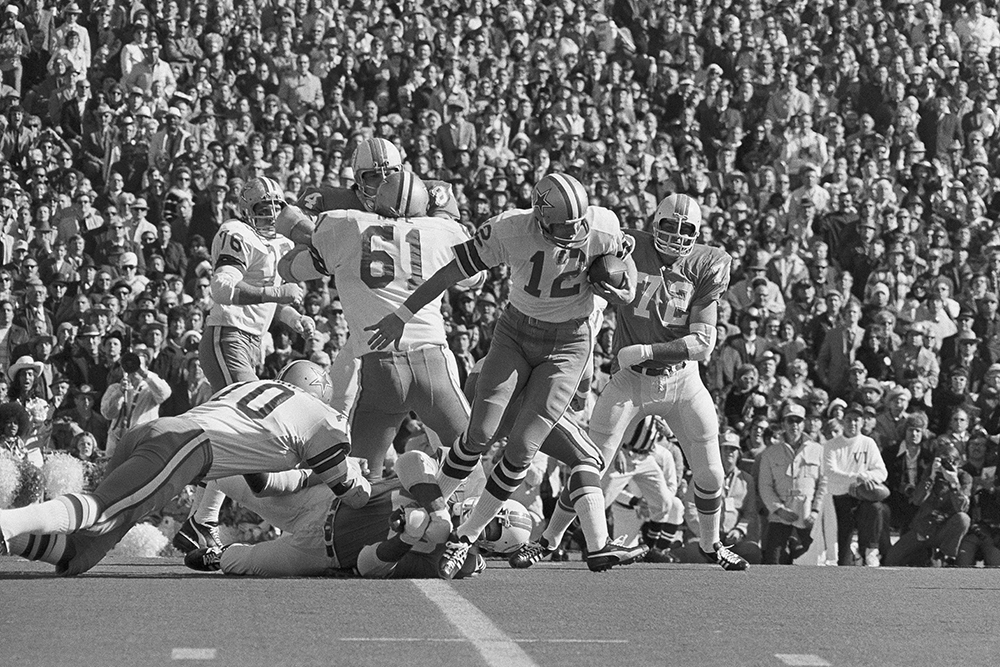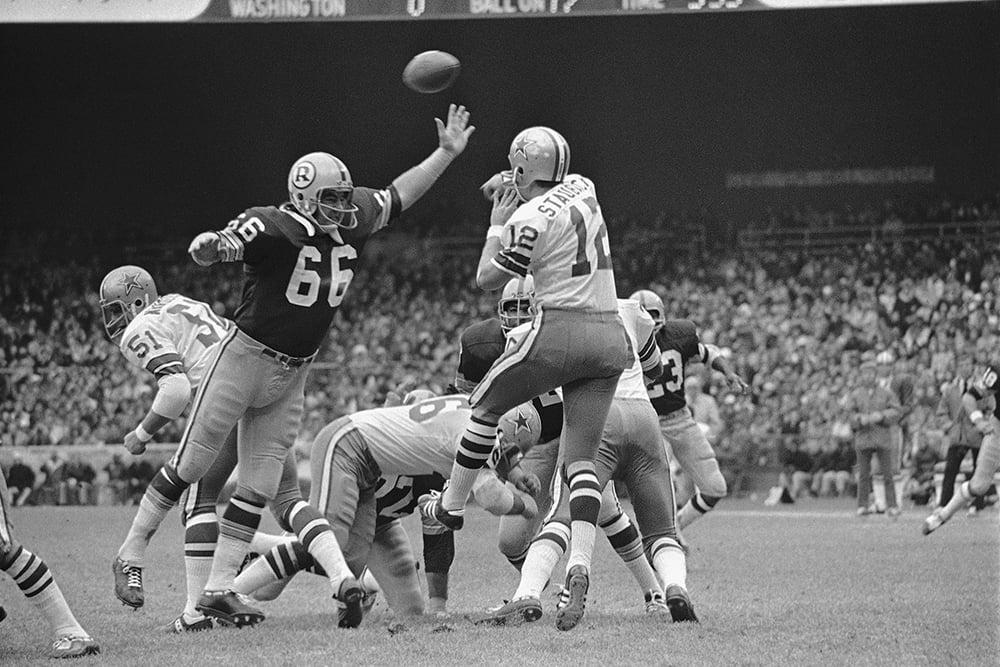Roger Staubach’s 1971: The greatest season you’ve never heard about
Special to the Pro Football Hall of Fame
(Editor’s note: This article is the latest in an ongoing series looking at quarterbacks’ achievements that have aged well over the past 80 NFL seasons.)
During his 11-year NFL career, few stars shined brighter than the man nicknamed “Captain Comeback.”
Approaching 44 years since he last took an NFL snap, ROGER STAUBACH still is regarded among the best to play the position. When the NFL announced the 100th Anniversary All-Time Team in 2019, Staubach was one of the 10 quarterbacks selected.
It’s not difficult to see why.
“Roger the Dodger” won 85 of the 114 games he started, led the Dallas Cowboys to four Super Bowls, won two of them and was enshrined into the Pro Football Hall of Fame in 1985.
Unfortunately for Staubach, the majority of his career was played during the “dead ball era” — skewing his statistics and masking the true extent of his dominance.
Relative to peers of his era and playing against some of the toughest, most dominant defenses in pro football history, Staubach left his mark on the game and retired with one of the sport’s most flawless resumés.
The 1963 Heisman Trophy winner at the U.S. Naval Academy, Staubach went on to become a six-time Pro Bowl selection in the NFL. He led the league in passer rating four times (1971, 1973, 1978 and 1979), completed the famed “Hail Mary” pass to win a playoff game in 1975 and earned a spot on the NFL’s All-Decade Team of the 1970s.
Staubach called it a career at the end of the 1979 season, retiring at the top of his game. He led the league in passer rating between 1977-79 (minimum 100 attempts) at 88.3. Fellow Hall of Famer DAN FOUTS ranked second during that stretch at 82.2.
A season to remember

While Staubach rode a statistical upswing into his retirement at the end of the 1970s, his performance much earlier in the decade merits special attention. It stands out as possibly the greatest season you’ve never heard about.
Where to begin?
During Staubach’s 13 starts in 1971, the Cowboys finished 13-0.
He led the NFL with a 104.8 passer rating during the thick of the dead-ball era: 13.9 points ahead of second-place BOB GRIESE (90.9). It was the highest passer rating differential between the league leader and runner-up during the entire decade. The only quarterback to come remotely close to that mark was Staubach himself in 1979, when his 92.3 passer rating topped Joe Theismann’s 83.9 by 8.4 points. For the rest of the decade, there was no gap between first and second greater than 2.3 points.
Staubach led the NFL in yards per passing attempt at 8.9 (tied with Atlanta’s Bob Berry).
His dominance wasn’t limited to his precision through the air. Among all players, regardless of position, Staubach led the NFL in rushing yards per carry (minimum 40 carries) at 8.4. Nobody else in 1971 averaged more than 7.0 yards per attempt.
Success in playoffs

Staubach carried that momentum into the postseason, throwing zero interceptions through the Cowboys’ championship run.
In Super Bowl VI, Staubach completed 12-of-19 passes (63.2%) for 119 yards, two touchdowns, zero interceptions and a 115.9 passer rating – shredding the Miami Dolphins defense. His two touchdown passes went to future Hall of Famers LANCE ALWORTH and MIKE DITKA.
While Staubach would go on to lead the Cowboys to three more Super Bowl appearances, winning a second championship against the Denver Broncos in Super Bowl XII, it can be argued that 1971 was the most impressive single season of his legendary career.
Ryan Michael is statistician, sportswriter and contributor to the Pro Football Hall of Fame. You can follow him on Twitter: @theryanmichael .
This article is the latest in an ongoing series highlighting noteworthy quarterback play over the past 80 seasons. Information from Pro-Football-Reference.com’s database helped make the research possible.
More of this series
- Analysis: Charlie Conerly’s giant accomplishments hold up as eras pass
- Y.A. Tittle’s journey from San Francisco to New York
- Analysis: An appreciation of Sammy Baugh’s historic 1943 season
- Legendary seasons for Sid Luckman, Peyton Manning separated by 70 years
- Looking back at TB12’s historic 2011 season 12 years later
- Russell Wilson’s decade of dominance in Seattle remains elite
- Roger Staubach’s 1971: The greatest season you’ve never heard about
- Silver anniversary: Randall Cunningham’s solid gold season with Vikings
- 50 years since Unitas’ last pass: Some things you might not know about No. 19
- Race to the top: Brady’s battle with Brees for the NFL’s most hallowed record
- Analysis: Did Andrew Luck exceed hype or fall short?
- Silver anniversary of John’s Elway’s sterling final game
- As cold as ice: Perception of Matt Ryan’s legacy after ‘28-3’
- Cam Newton leads high-flying 2015 Carolina Panthers
- Peyton Manning’s four-year rodeo in Mile High City
- Dan Marino eclipsed long-standing TD record 40 years ago
Corvus Vodka added to roster as ‘proud partner’ of Pro Football Hall of Fame
Ty Law, a member of the Class of 2019, has launched a new premium spirit, Corvus Vodka, that has been designated the official vodka of the Pro Football Hall of Fame.
Gold Jacket Spotlight: Richard Dent ‘definition of dominating’
Richard Dent, the 203rd overall pick of the 1983 NFL Draft, who, coincidentally, played 203 career NFL games and earned Super Bowl XX MVP honors, steps into this week’s Gold Jacket Spotlight.